PLASTIC SURGERY
OUR VISION OF AESTHETIC SURGERY
Our commitment to medical excellence is now reflected in the opening of a new department dedicated entirely to aesthetics and overall well-being. With an outstanding team of aesthetic surgeons and state-of-the-art facilities, we offer an exceptional setting for achieving your highest aesthetic aspirations.
At Clinique Monte Carlo, every procedure is guided by the pursuit of harmony, self-confidence and total patient satisfaction.
Welcome to a world where science is at the service of beauty.

INTRODUCTION TO PLASTIC SURGERY
Contemporary cosmetic surgery is much more than a quest for superficial beauty. Today, it embodies a holistic approach to improving self-esteem, self-confidence and overall well-being. By evolving beyond mere physical correction, cosmetic surgery offers personalized solutions, focusing on each individual’s inner harmony and balance.
It is rooted in a perspective of individual choice, self-confidence and comfort, redefining the perception of beauty and personal expression.
The Consultation
During your interview with the practitioner, you explain your reasons for choosing a PLASTIC SURGERY procedure. You also discuss your medical, surgical and family history.
This information is crucial to the practitioner’s ability to advise you on the most appropriate technique for your situation.
Since every patient is unique, a tailor-made approach is favored to meet each individual’s specific needs.

Read more
Consultation procedure
- Initial interview: : You share your motivations, explain what you wish to achieve with cosmetic surgery, and describe the specific areas of concern to you. This is also the time to discuss your medical, surgical and family history.
- Physical examination : The surgeon assesses your anatomy, skin quality and other relevant factors. This enables him or her to better understand your needs and recommend suitable treatment options.
- Discussion of Treatment Options : explaining the benefits, risks and expected results for each option. He can also provide information on techniques, potential scarring and post-operative care.
- Answering questions : You have the opportunity to ask any questions you may have about the procedure, costs, recovery time, etc... It is essential that all your concerns are addressed comprehensively.
- Presentation of Before/After Photos : The practitioner may show you before/after photos of patients who have undergone similar procedures, which can help you visualize possible outcomes.
- Discussion of Realistic Expectations : The surgeon realistically discusses the results you can expect based on your anatomy and the procedures being considered.
- Personalized Treatment Plan : Based on all the information gathered, the surgeon will develop a personalized treatment plan that addresses your specific needs and goals.
- Financial and Organizational Aspects : the costs of the procedure, payment arrangements, and surgery planning are often discussed at this stage.
It is important to note that the cosmetic surgery consultation is an interactive process, where open communication between patient and practitioner is essential to ensure mutual understanding and realistic expectations.
PLASTIC SURGERY PROCEDURES
FACE SURGERY
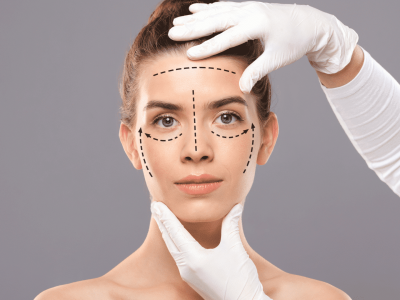
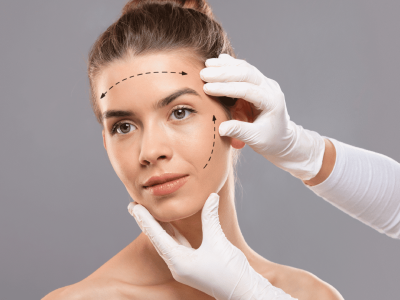
FACE
AND NECK LIFT
Also known as cervico-facial lifting, is an aesthetic surgical procedure designed to reduce the visible signs of aging in the face and neck.
The procedure aims to restore skin firmness, remedy sagging tissues, and correct wrinkles and folds caused by the loss of collagen and elasticity over time.
Different facelift techniques are available, depending on your needs and skin type :
- Mini facelift
- Deep plane
- Ponytail lift
- Lipofilling and Microfat: regenerative surgery
- Bichectomy: sculpting the lower part of the face
Read more
THE PROCEDURE
Facelifts generally involve re-tensioning underlying muscles, repositioning facial tissues, and removing excess skin.
New techniques now make it possible to perform these procedures with scars completely hidden from the scalp.
The procedure can also include adjustments to the neck to create a more toned, rejuvenated overall appearance.
This aesthetic surgery is often chosen by people seeking to restore a more youthful appearance and improve skin firmness on the face and neck.
It is important to note that results can vary from one individual to another, and the choice of this procedure should be carefully discussed with a qualified surgeon.
EYELID AND EYE SURGERY
Eyelid surgery is an aesthetic surgical procedure designed to improve the appearance of the upper or lower eyelids, or both.
The procedure can be performed for aesthetic purposes to correct sagging skin, fat pockets or wrinkles around the eyes, or for functional purposes to improve vision by removing excess skin that can affect the field of vision.
Blepharoplasty can involve the removal of excess skin, fat and sometimes muscle around the eyes, resulting in a more youthful, alert appearance
Regenerative addition blepharoplasty involves operating on the eyelids and adding your own fat (Microfat or Nanofat) at the same time to treat tired or sunken eyes.
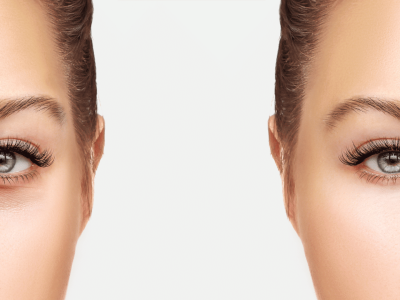
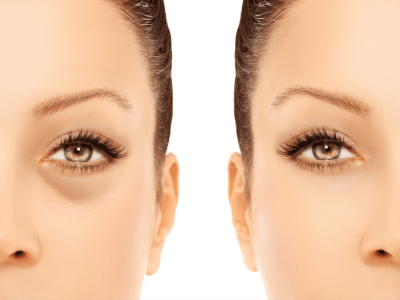

Before
After
RHINOPLASTY
The nose can manifest a variety of undesirable features, such as a hump, too pronounced a tip, excessive length, excessive width, short opening, excessive narrowness or deviation.
These imperfections, frequently attributable to hereditary factors, trauma or the natural aging process, can be rectified through a personalized rhinoplasty, specifically tailored to each patient’s individual morphology.
The “conservative” technique is very often employed, as this procedure reshapes the nose while preserving its intact bone and cartilage structure. The aim is to reduce the need for complex, invasive surgical procedures.
SILHOUETTE SURGERY
Liposuction
Liposuction, also known as liposuction or liposculpture, is an aesthetic surgical procedure designed to eliminate unwanted fat deposits in certain areas of the body.
It is often performed to improve the figure by reshaping body contours.
Liposuction with lipofilling
This surgical procedure is performed to reshape certain parts of the body by removing fat from a donor area, often the abdomen, hips, thighs or knees, and reinjecting it after purification into a target area, which may require additional volume, such as the breasts, buttocks, face or other regions.
Read more
THE PROCEDURE
The liposuction procedure involves the insertion of small, hollow cannulas through small incisions made in the skin.
These cannulas are used to gently suction excess fat from beneath the skin, creating a more harmonious silhouette. Liposuction is generally performed on areas such as the abdomen, hips, thighs, buttocks, arms, neck and even the chin.
It is important to note that liposuction is not a substitute for overall weight loss, and can only be used to remove localized fat deposits. It is often performed in conjunction with other cosmetic surgical procedures to achieve more comprehensive results, ®Renuvion.
As with any surgical procedure, thorough consultations with a qualified surgeon are essential to assess the suitability of liposuction for a specific patient.

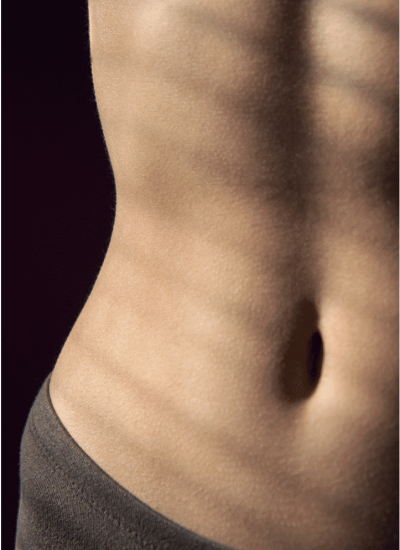
Tummy tuck
A tummy tuck is an aesthetic surgical procedure designed to reshape the abdominal region by removing excess skin and fat.
This procedure is often chosen by people who have undergone significant changes in the abdominal region due to pregnancy, significant weight loss or aging.
Read more
THE PROCEDURE
Abdominoplasty can involve several techniques, but the most common method involves making a low horizontal incision along the pubis line. Through this incision, the surgeon can tighten weakened abdominal muscles, remove excess skin and fat, and create a flatter, more toned abdomen.
It's important to note that abdominoplasty is not a weight-loss solution, but rather a procedure to improve the shape and firmness of the abdominal region. Potential candidates should consult a qualified plastic surgeon to determine whether this procedure is appropriate for their specific needs.
Thigh lift
The thigh lift, also known as cruroplasty, is a cosmetic surgical procedure designed to reshape and firm the thigh area. This procedure is often chosen by people seeking to treat excessive skin sagging, excess fat or folds in the thigh area, usually caused by factors such as significant weight loss or aging.
Read more
THE PROCEDURE
The thigh lift technique can vary according to the patient's specific needs, but generally involves making incisions in the inner thigh area, usually hidden in the inguinal folds.
Through these incisions, the surgeon can remove excess skin, reshape contours, and tighten tissues to achieve a more toned, aesthetically pleasing appearance.
It's important to note that a thigh lift is a surgical procedure that requires careful evaluation by a qualified plastic surgeon.
Potential candidates should discuss their goals and expectations in detail with their surgeon to determine whether this procedure is the best option for them.
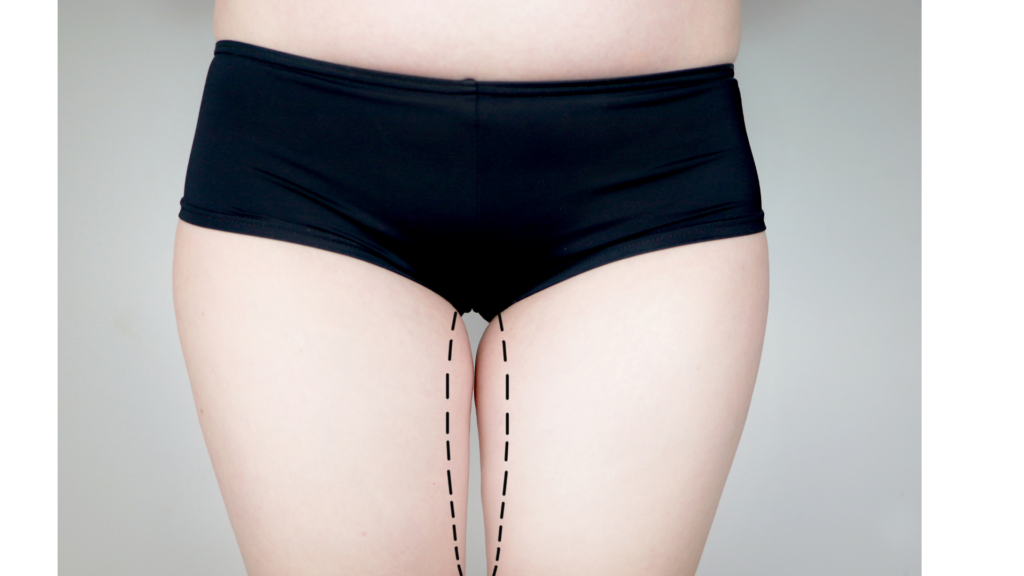
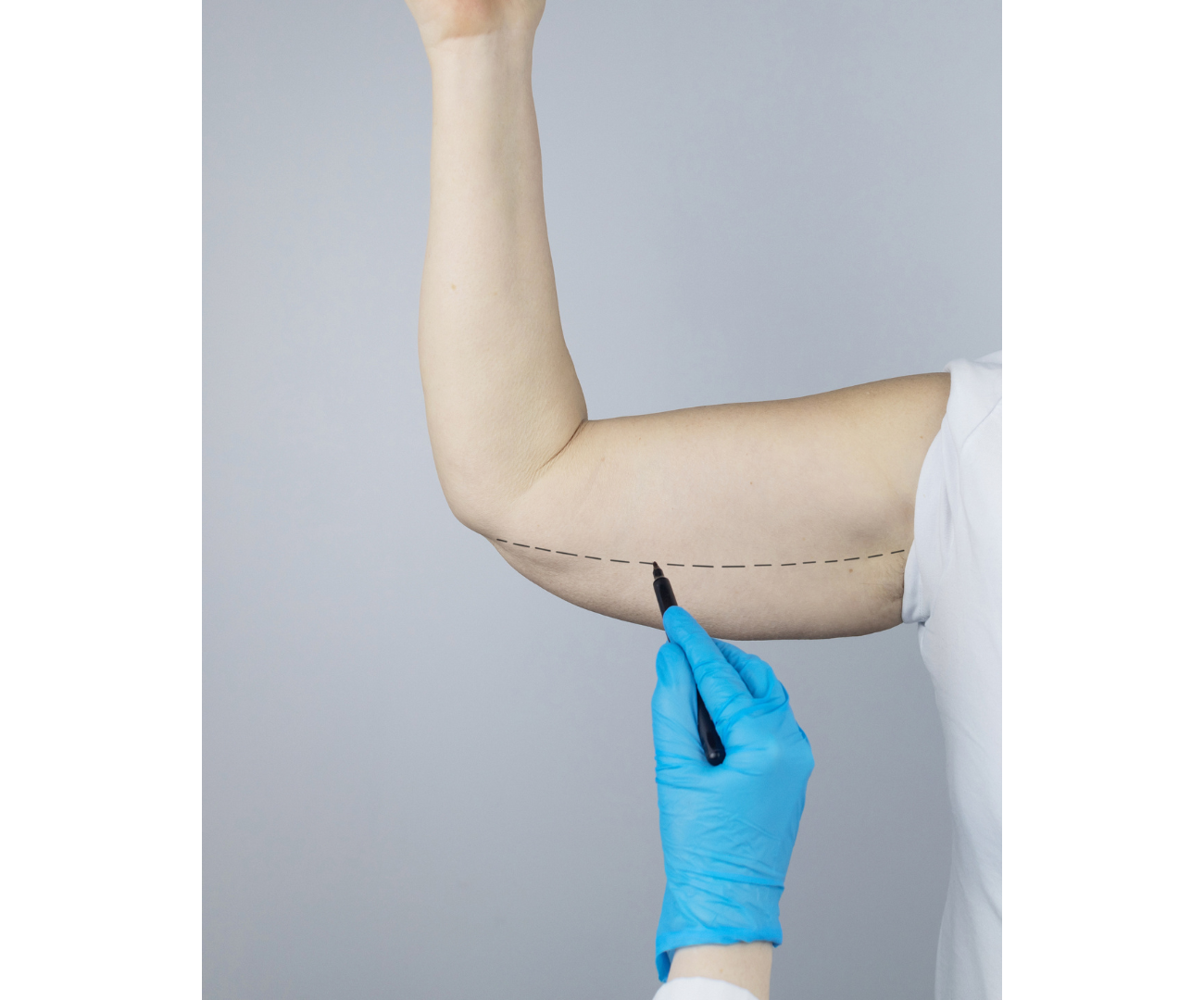
Arm lift
Arm lift, also known as brachioplasty, is a cosmetic surgical procedure designed to improve the shape and firmness of the arms by treating sagging skin and excess fat in this area.
This procedure is often chosen by people who have experienced significant weight loss, age-related changes, or those concerned about the flabby appearance of their arms.
Read more
THE PROCEDURE
Arm lift, also known as brachioplasty, is a cosmetic surgical procedure designed to improve the shape and firmness of the arms by treating sagging skin and excess fat in this area. This procedure is often chosen by people who have experienced significant weight loss, age-related changes, or those concerned about the flabby appearance of their arms.
As with any cosmetic surgical procedure, patients discuss their goals, expectations and medical history in detail with a qualified plastic surgeon to determine whether an arm lift is the best option for them.
BREAST SURGERY
Breast Augmentation
Breast augmentation is an aesthetic surgical procedure designed to increase the size and improve the shape of the breasts. This procedure is often chosen by women who wish to increase breast volume, whether for aesthetic reasons or because of loss of volume due to pregnancy or significant weight loss.
Read more
The procedure
- Initial consultation : during the first consultation with the plastic surgeon, the patient's aesthetic goals and expectations are discussed in detail.
- Implant selection : the patient works with the surgeon to choose the size, shape and type of breast implants that match her anatomical preferences and aesthetic goals. Using a template or trial prosthesis, the surgeon will be able to show the positioning and result, to help you decide on the most suitable breast implants. Possible incisions and locations are also examined.
- Surgery : breast augmentation surgery is generally performed under general anaesthetic. The surgeon makes an incision, places the chosen breast implant using a "no-touch" technique, and adjusts the position to achieve the desired result.
- Post-operative recovery : after the procedure, the patient may experience some swelling, bruising and discomfort. A compression bra is recommended to promote healing and minimize swelling.
- Post-operative follow-up : follow-up consultations are scheduled to monitor healing, adjust post-operative care and ensure that the patient is recovering optimally.
- Long-term recovery :it is important to follow the surgeon's recommendations regarding activity restrictions, incision care and regular follow-up to ensure successful long-term recovery.
Breast augmentation is a common procedure, but it's essential to discuss your goals and concerns in detail with a qualified plastic surgeon to make informed decisions and achieve satisfactory results.


Breast Reduction
Breast reduction is an aesthetic surgical procedure designed to reduce the size and weight of the breasts by removing excess mammary gland, fatty tissue and skin. This procedure is often chosen by women who experience physical or emotional problems associated with overly large breasts, such as back, neck or shoulder pain, skin irritation under the breasts, or altered quality of life due to disproportionate breasts.
Read more
THE PROCEDURE
- Initial consultation : during the first meeting with the plastic surgeon, the patient's reasons for breast reduction, expectations and goals are discussed in detail. The surgeon also reviews the patient's general health and medical history.
- Surgical planning : the surgeon and patient work together to determine the desired size and shape of the breasts after reduction. Surgical options and specific techniques, including possible incisions, are also discussed.
- Surgery : the procedure is generally performed under general anaesthetic. The surgeon makes incisions to remove excess breast tissue, reshape the breasts and replace the nipple and areola in a more aesthetically pleasing position.
- Post-operative recovery : after breast reduction, the patient may experience some swelling, bruising and discomfort. A compression bra is recommended to promote healing.
- Post-operative follow-up : follow-up consultations are scheduled to monitor healing, adjust post-operative care and ensure that the patient is recovering optimally.
Breast reduction is a procedure that can bring significant relief from physical symptoms and improve quality of life for many women. A thorough discussion with a qualified plastic surgeon is essential to understand the benefits, risks and possible outcomes of the procedure.
Breast ptosis
Breast ptosis refers to sagging or loosening of the breasts, usually characterized by a low position of the nipple in relation to the submammary fold. This condition is often referred to as “drooping breast” or “flaccid breast”.
Breast ptosis can result from a number of factors, including pregnancy, breastfeeding, aging, significant weight loss and genetics.
Read more
THE PROCEDURE
Treatment of breast ptosis may involve either prosthesis placement or mastopexy, also known as a breast lift, or both combined. Fat injection (lipofilling) may also be considered.
This surgical procedure aims to lift and firm the breasts by removing excess skin, reshaping the breast tissue and returning the nipple to a higher, more aesthetically pleasing position.
The decision to undergo surgery depends on a person's personal preferences, comfort level with the appearance of their breasts, and the advice and recommendations of a qualified plastic surgeon.


Gynecomastia
Gynecomastia is a condition characterized by the excessive development of mammary glands or breast fat tissue in men.
This can lead to an increase in breast size in men, giving a mammary appearance.
Gynecomastia can occur at any age, from adolescence to adulthood, and can be caused by a variety of factors.
Read more
Common causes of gynecomastia include:
- Hormonal imbalance : an increase in estrogen levels relative to testosterone levels can lead to excessive breast tissue development in men.
- Use of medication : certain drugs, such as hormones, steroids and antidepressants, can cause gynecomastia.
- Medical conditions : certain medical conditions, such as liver or kidney problems, may be associated with gynecomastia.
- Genetic factors : a genetic predisposition may also play a role in the development of gynecomastia.
Treatment of gynecomastia depends on the underlying cause.
In some cases, lifestyle changes, discontinuing the use of certain medications or treating underlying medical conditions can help reduce gynecomastia.
However, in some persistent cases, a surgical procedure called breast reduction may be recommended to remove excess tissue and restore a more masculine appearance to the torso.
This is achieved through a small incision hidden at the areola. In other cases, correction can be achieved by liposuction.
Concerned patients should consult a healthcare professional for an accurate diagnosis and appropriate treatment recommendations.
BUTTOCK SURGERY
Buttock implants
Aesthetic surgery offers a solution for enhancing a flat buttock using soft silicone buttock implants.
This prosthetic buttock augmentation procedure produces a fuller, shapelier buttock, without leaving any visible scars.
Read more
The procedure
The buttock implant is carefully inserted into the gluteus maximus muscle, specifically in the upper half of the buttock.
In addition, liposuction of the hips can be performed to further accentuate the curve obtained, enhancing the lower part of the silhouette.
This procedure is particularly suited to women wishing to increase the volume of their buttocks, which may have been underdeveloped since puberty, due to their morphology or after weight loss, in order to give a more generous shape to flat buttocks or to lift the buttocks.
More and more women and men are expressing the desire to undergo buttock augmentation to enhance their curvature and improve the aesthetics of this area. In some cases, buttock augmentation can be achieved by fat injection (buttock lipofilling).
These procedures are aimed at patients who feel that their buttocks are :
- Underdeveloped or too flat, hence the need for volume enhancement.
- Sagging and flabby, and wish to restore firmness and shape.

Stages of your aesthetic surgery
CONSULTATION
Share your motivations, discuss your goals and background.
Examination
Anatomical assessment to better understand your needs.
TREATMENT OPTIONS
Discussion of the various options, including benefits, risks and possible outcomes, given your anatomy
BEFORE/AFTER PHOTO
Visualize possible results with concrete examples
TREATMENT PLAN
Draw up a personalized plan based on your goals.
INFORMED CONSENT
Informed consent if you decide to proceed with the procedure.
You decide to have an operation
Planning the operation
Once you've made your decision, an operation date will be scheduled according to the availability of the surgeon and the clinic.
Pre-operative instructions
Specific instructions on how to prepare for the operation, appointment with the anesthetist, pre-op instructions, check-in at the clinic.
Post-operative care
You will receive post-operative care, including pain medication, dressing instructions and care of the operated area.
Follow-up
You will be cared for by a professional medical team, always available 24/7 by telephone

The main motivations
Today, the motivations for seeking plastic surgery are diverse, reflecting changing social norms, perceptions of beauty and attitudes towards personal well-being.
Read more
Key motivations include :
Improving self-esteem : cosmetic surgery is often sought to boost self-confidence and promote a positive body image.
Correction of perceived imperfections : individuals seek to correct physical features they consider imperfections, such as the nose, breasts, or other areas of the body.
Impact of aging : combating the signs of aging is a frequent motivation, with procedures such as facelifts or eyelid surgery to restore a more youthful appearance.
Pression sociale et normes esthétiques : contemporary beauty standards, often influenced by social media and popular culture, can put pressure on individuals to match specific aesthetic ideals.
General well-being : some people see cosmetic surgery as a way of feeling better about their bodies and maintaining physical and mental balance.
Career development : in some cases, improved appearance can be linked to professional motivations, particularly in sectors where appearance plays a significant role.
Technological advances and accessibility : Technological advances and increasingly non-invasive procedures have contributed to the wider accessibility and acceptance of cosmetic surgery.
The surgeon's patient charter
The relationship between a plastic surgeon and his or her patient is based on trust, transparency and mutual respect.
Read more
Listening and Communication : the surgeon is committed to listening carefully to the patient's concerns, expectations and aesthetic goals. Open and honest communication is essential to establish a clear understanding of expectations and possible outcomes.
- Complete information : the surgeon will provide complete and accurate information about the proposed procedure, including benefits, risks, alternatives and realistic expectations. The patient must be fully informed to make informed decisions.
- Informed Consent: the surgeon will obtain the patient's informed consent, demonstrating that the patient understands the implications of the procedure, possible outcomes and associated risks.
- Respect for Dignity: the surgeon will respect the patient's dignity, privacy and confidentiality at all stages of the medical process.
- Ethical Standards: the surgeon will adhere to high ethical standards, placing the safety and well-being of the patient at the forefront of all decisions and actions.
- Personalized Care: the surgeon will recognize the uniqueness of each patient, tailoring procedures and recommendations to specific needs and individual characteristics.
- Post-operative follow-up : the surgeon will ensure attentive follow-up after the procedure, providing appropriate post-operative care, advice and information on recovery.
- Availability and Accessibility: the surgeon will be accessible to answer the patient's questions and concerns before and after surgery, demonstrating a commitment to ongoing follow-up.
- Evolution of Skills : the surgeon is committed to maintaining and improving professional skills through continuing education and updating knowledge to provide the best possible care.
- Empathy and Compassion: the surgeon will be empathetic and compassionate, recognizing the emotional impact of plastic surgery on the patient and offering psychological support when necessary.
This charter establishes an essential framework for the relationship between cosmetic surgeon and patient, fostering respectful and effective collaboration to achieve aesthetic results and mutual satisfaction.

